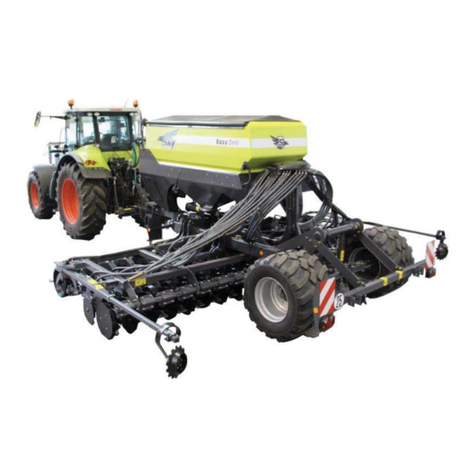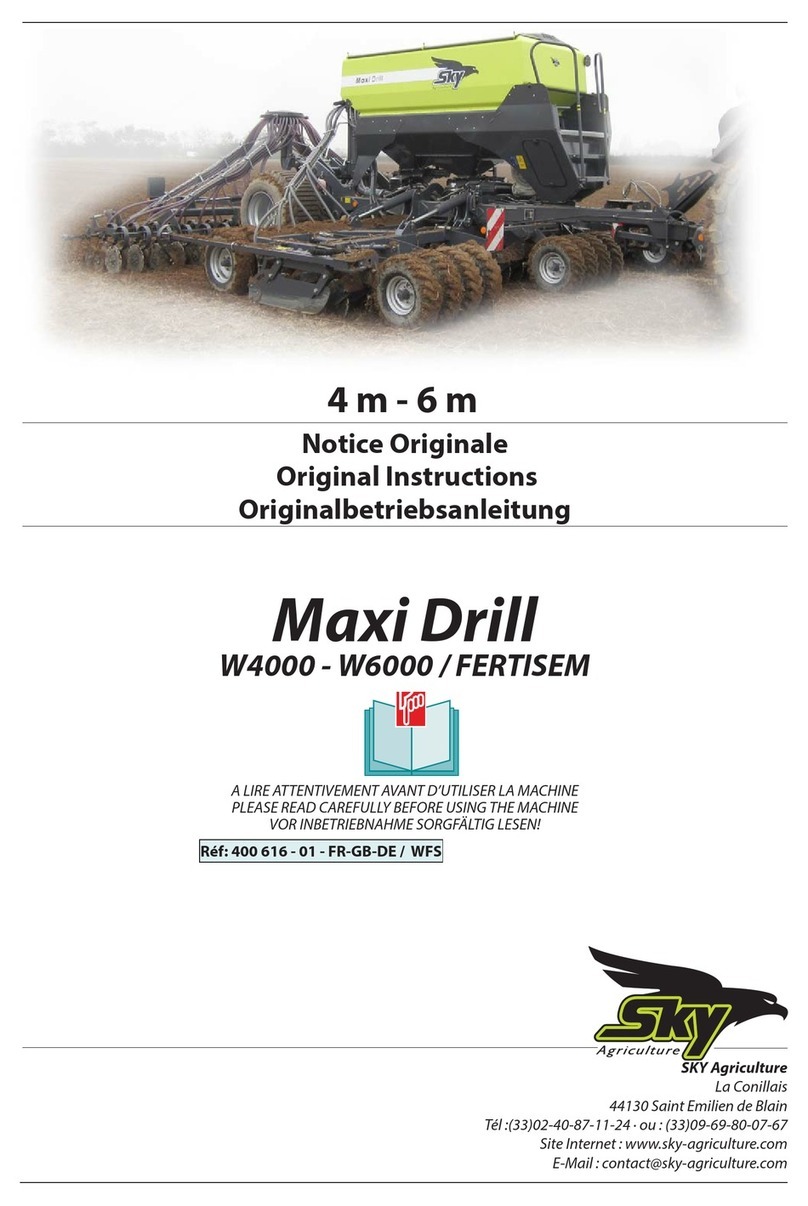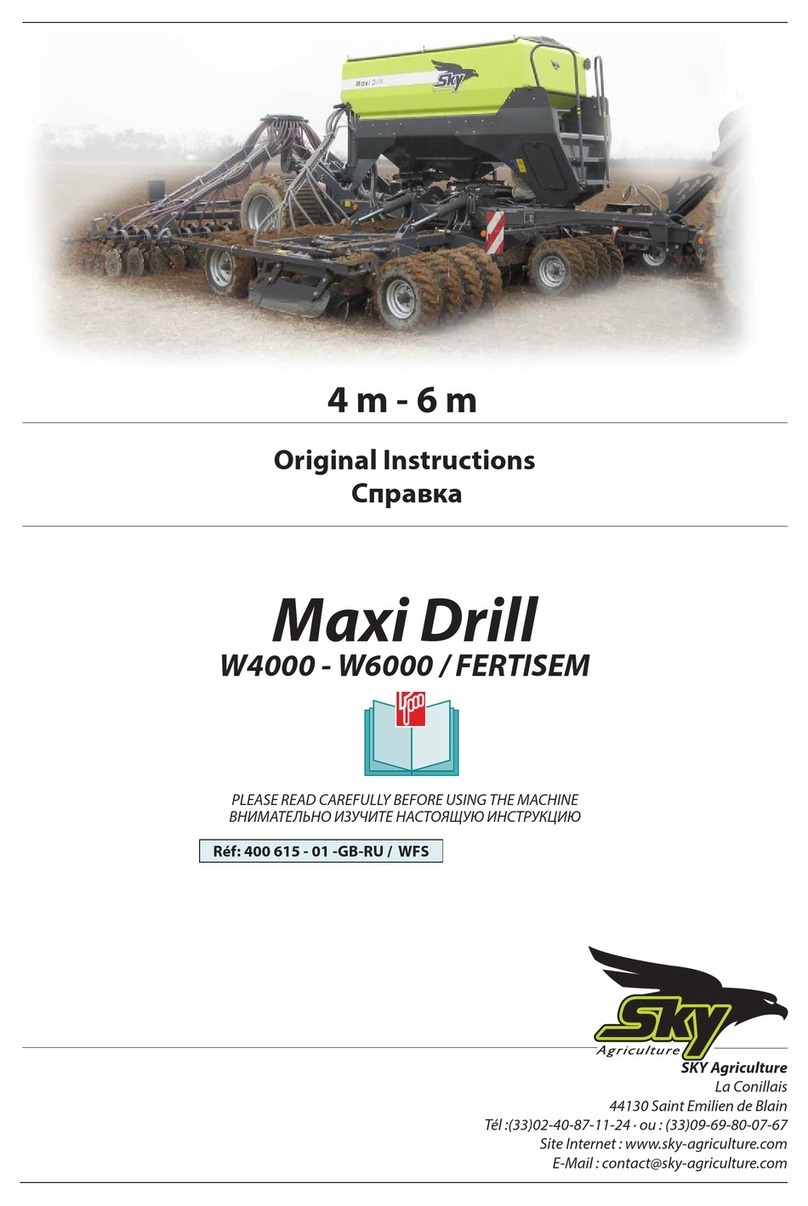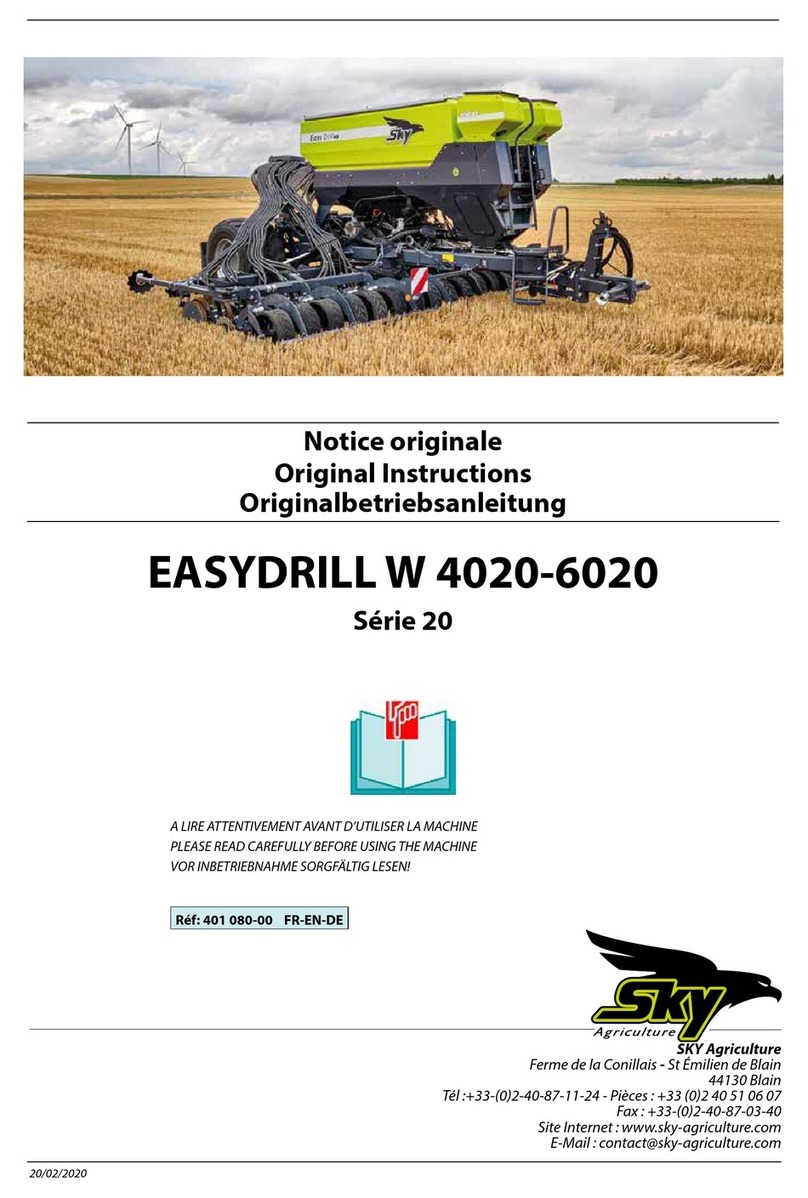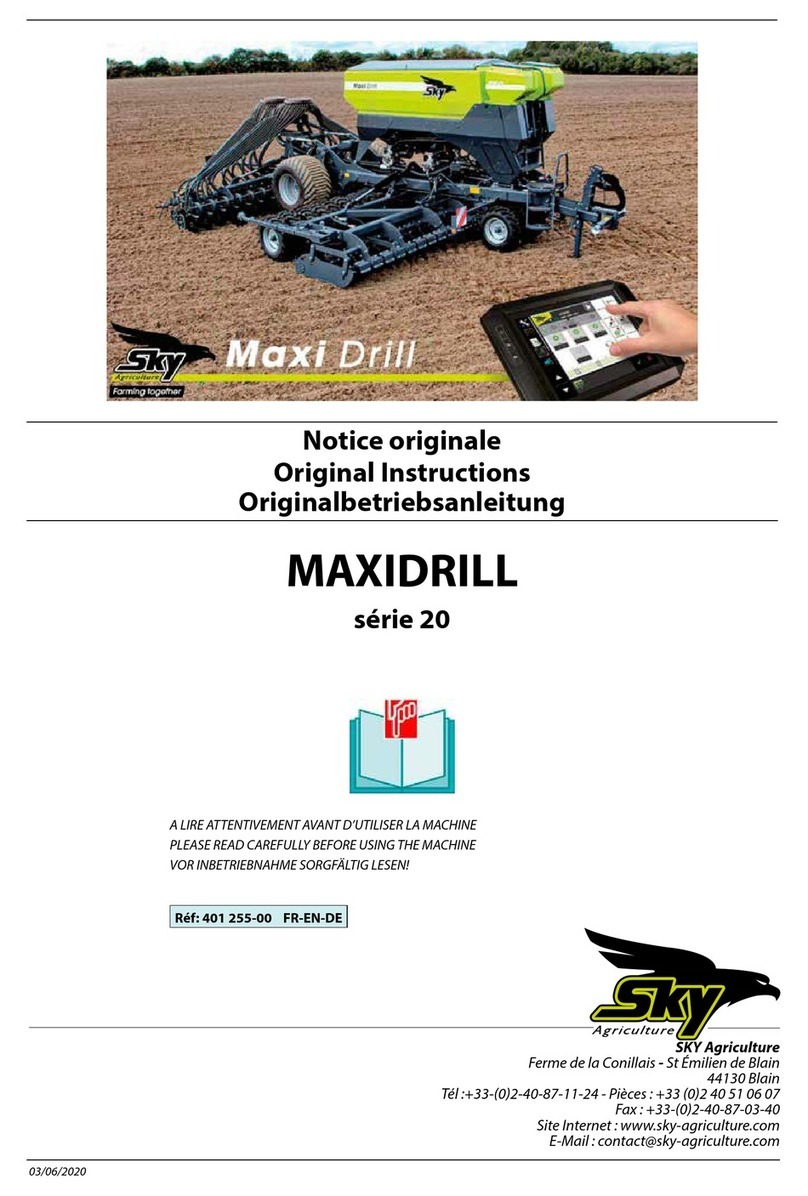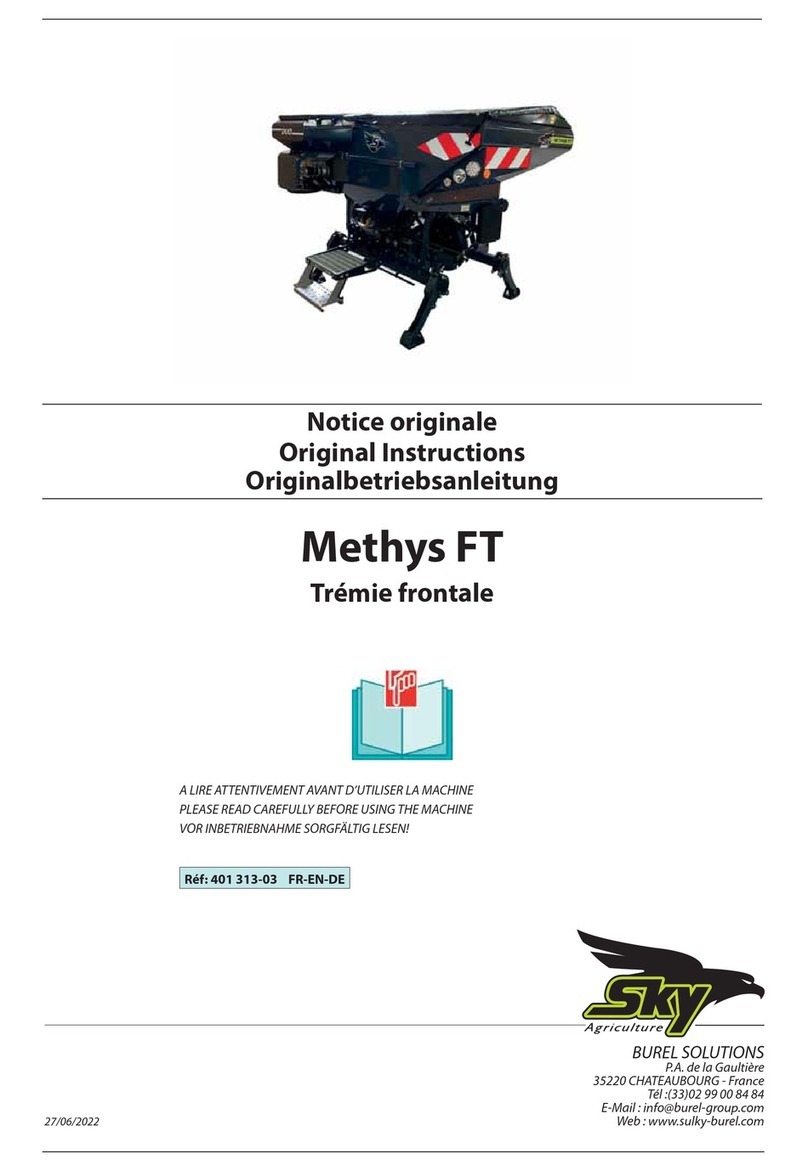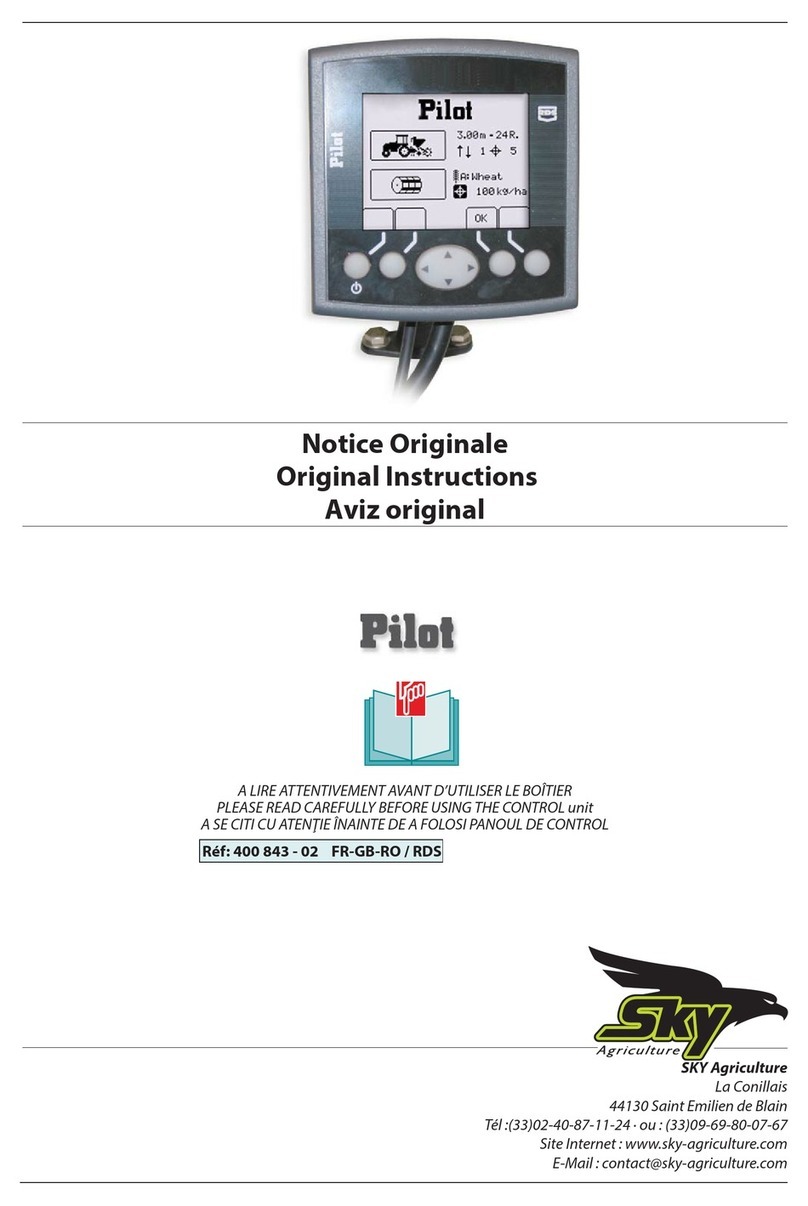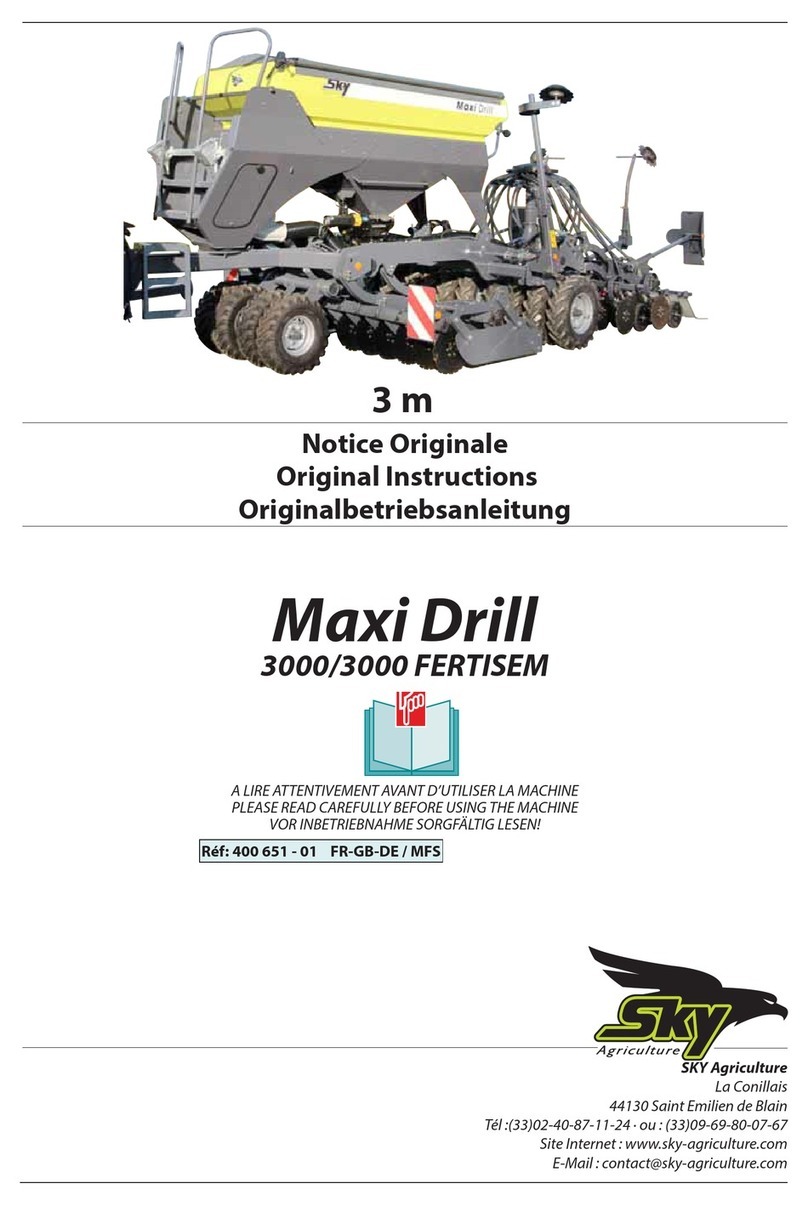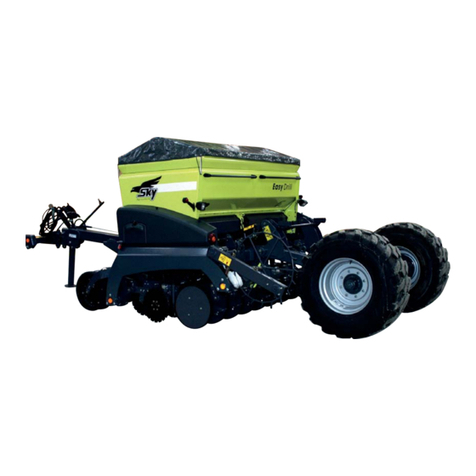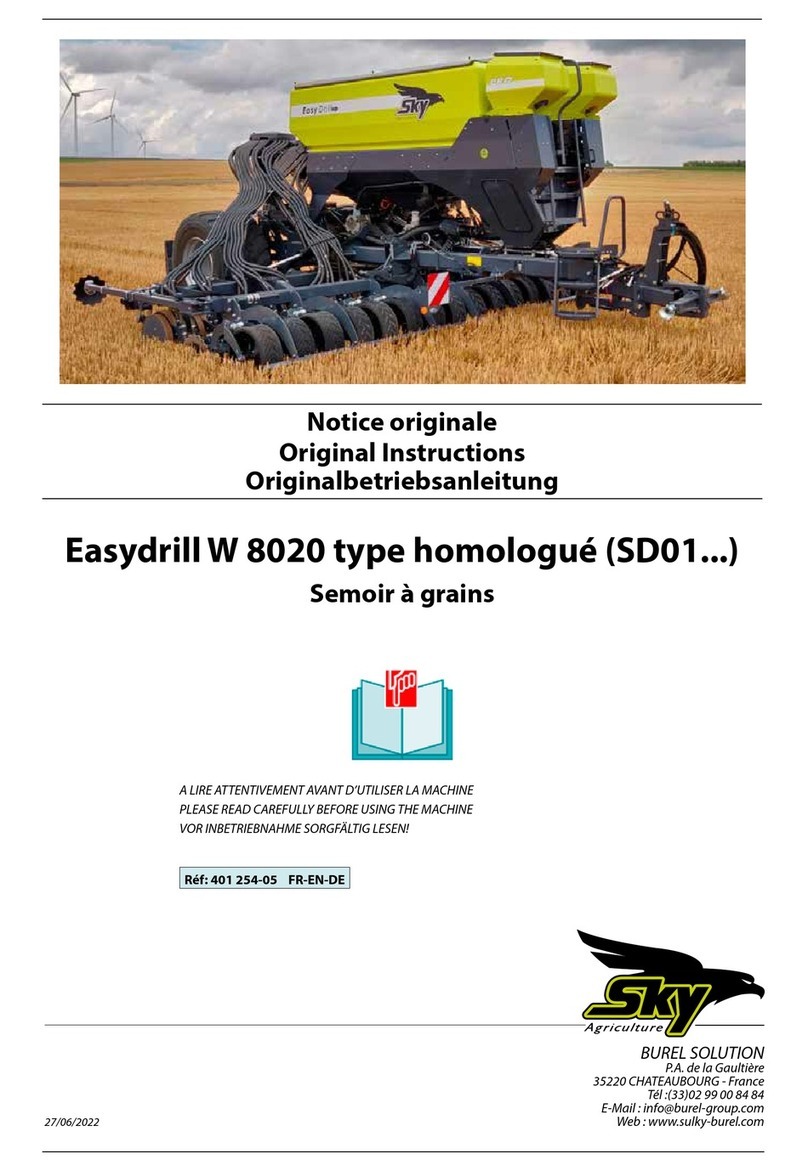
ATTELAGE
1 - Pendant les phases d’attelage et de dételage
et si votre machine est équipée de béquille, veiller
à ce que l’axe de verrouillage de la béquille soit
correctement verrouillé.
2 - Lors de l’attelage de la machine au tracteur ou de
sa dépose, placer le levier de commande du relevage
hydraulique dans une position telle que toute entrée
en action du relevage ne puisse intervenir de façon
inopinée.
3 - Lors de l’attelage de la machine au relevage 3
points du tracteur, veiller à ce que les diamètres
des broches ou tourillons correspondent bien aux
diamètres des rotules du tracteur.
4 - Attention ! Dans la zone de relevage 3 points, il
existe des risques d’écrasement et de cisaillement!
5 - Ne pas se tenir entre le tracteur et la machine lors
de la manœuvre du levier de commande extérieur
du relevage.
6 - Au transport la machine doit être stabilisée par
les tirants de rigidication du relevage pour éviter
tout ottement et débattement latéral.
7 - Lors du transport de la machine en position
relevée, verrouiller le levier de commande du
relevage.
8 - Ne jamais dételer la machine lorsque la trémie
est remplie.
ORGANES D’ANIMATION
(Prises de force et arbres de transmission à cardans)
1 - N’utiliser que les arbres de transmission à
cardans fournis avec la machine ou préconisés par
le constructeur.
2 - Les protecteurs des prises de force et des arbres
de transmission à cardans doivent toujours être en
place et en bon état.
3 - Veiller au recouvrement correct des tubes des
arbres de transmission à cardans, aussi bien en
position de travail qu’en position de transport.
4 - Avant de connecter ou de déconnecter un arbre
de transmission à cardans, débrayer la prise de force,
couper le moteur et retirer la clé de contact.
5 - Si l’arbre de transmission à cardans primaire est
équipé d’un limiteur de couple ou d’une roue libre,
ceux-ci doivent impérativement être montés sur la
prise de force de la machine.
6 - Veiller toujours au montage et au verrouillage
corrects des arbres de transmission à cardans.
7 - Veiller toujours à ce que les protecteurs des arbres
de transmission à cardans soient immobilisés en
rotation à l’aide des chaînettes prévues à cet eet.
8 - Avant d’embrayer la prise de force, s’assurer que
le régime choisi et le sens de rotation de la prise
de force sont conformes aux prescriptions du
constructeur.
9 - Avant d’embrayer la prise de force, s’assurer
qu’aucune personne ou animal ne se trouve à
proximité de la machine.
10 - Débrayer la prise de force lorsque les limites
de l’angle de l’arbre de transmission à cardans
prescrites par le constructeur risquent d’être
dépassées.
11 - Attention! Après le débrayagedela prise deforce,
les éléments en mouvement peuvent continuer
à tourner quelques instants encore. Ne pas s’en
approcher avant immobilisation totale.
12 - Lors de la dépose de la machine, faire reposer les
arbres de transmission à cardans sur les supports
prévus à cet eet.
13 - Après avoir déconnecté l’arbre de transmission
à cardans de la prise de force du tracteur, celle-ci
doit être recouverte de son capuchon protecteur.
14 - Les protecteurs de prise de force et d’arbres de
transmission à cardans endommagés doivent être
remplacés immédiatement.
CIRCUIT HYDRAULIQUE
1 - Attention ! Le circuit hydraulique est sous pression.
2 - Lors du montage de vérins ou de moteurs
hydrauliques, veiller attentivement au branchement
correct des circuits, conformément aux directives du
constructeur.
3 - Avantdebrancherunexibleaucircuithydraulique
du tracteur, s’assurer que les circuits côté tracteur et
côté machine ne sont pas sous pression.
4 - Il est vivement recommandé à l’utilisateur de la
machine de suivre les repères d’identication sur les
raccords hydrauliques entre le tracteur et la machine
an d’éviter des erreurs de branchement. Attention !
Il y a risque d’interversion des fonctions (parexemple :
relever/abaisser).
5 - Contrôlerunefoisparanlesexibleshydrauliques:
. Blessure de la couche extérieure
. Porosité de la couche extérieure
. Déformation sans pression et sous pression
. Etat des raccords et des joints
La durée d’utilisation maximum des exibles est de
6 ans. Lors de leur remplacement, veiller à n’utiliser
que des exibles de caractéristiques et de qualité
prescrits par le constructeur de la machine.
6 - Lors de la localisation d’une fuite, il conviendra
de prendre toute précaution visant à éviter les
accidents.
7 - Tout liquide sous pression, notamment l’huile
du circuit hydraulique, peut perforer la peau et
occasionner de graves blessures ! En cas de blessure,
consulter de suite un médecin ! Il y a danger
d’infection !
8 - Avant toute intervention sur le circuit
hydraulique, abaisser la machine, mettre le circuit
hors pression, couper le moteur et retirer la clé de
contact.
ENTRETIEN
1 - Avant tous travaux de maintenance, d’entretien
ou de réparation, ainsi que lors de la recherche
de l’origine d’une panne ou d’un incident de
fonctionnement, il faut impérativement que la prise
de force soit débrayée, que le moteur soit coupé et la
clé de contact retirée.
2 - Contrôler régulièrement le serrage des vis et des
écrous. Resserrer si nécessaire !
3 - Avantdeprocéderàdestravauxd’entretiensurune
machine en position relevée, étayer celle-ci à l’aide
d’un moyen approprié.
4 - Lors du remplacement d’une pièce travaillante,
(pale pour les distributeurs ou socs pour les semoirs),
mettre des gants de protection et n’utiliser qu’un
outillage approprié.
5 - Pourlaprotectiondel’environnement,ilestinterdit
de jeter ou de déverser les huiles, graisses et ltres en
tout genre. Les coner à des entreprises spécialisées
dans leur récupération.
6 - Avant toute intervention sur le circuit électrique,
déconnecter la source d’énergie.
7 - Les dispositifs de protection susceptibles d’être
exposés à une usure doivent être contrôlés
régulièrement. Les remplacer immédiatement s’ils
sont endommagés.
8 - Les pièces de rechange doivent répondre
aux normes et caractéristiques dénies par le
constructeur. N’utiliser que des pièces de rechange
Sulky !
9 - Avant d’entreprendre des travaux de soudure
électrique sur le tracteur ou la machine attelée,
débrancher les câbles de l’alternateur et de la
batterie.
10 - Les réparations aectant les organes sous
tension ou pression (ressorts, accumulateurs de
pression...) impliquent une qualication susante et
font appel à un outillage spécique ; aussi ne doivent-
elles être eectuées que par un personnel qualié.
11 - Tous les composants ainsi que les dispositifs de
protection, présentant un état de corrosion avancé,
doivent être immédiatement remplacés.
12 - Lors des travaux d’entretien ou de réparation,
l’opérateur devra travailler en toute sécurité et si
nécessaire utiliser des solutions adaptées et en
phase avec la législation du travail, notamment
pour le travail en hauteur.
PROTECTION DE L’UTILISATEUR
1 - Ne marchez pas sur les capots ni sur aucun autre
endroit de la machine, à l’exception des zones
(échelles, plate-forme, moyens d’accès au poste de
travail ou de réglage)
2 - Avant toute intervention sur la machine,
s’assurer que celle-ci ne peut être mise en route
accidentellement.
3 - Il est conseillé d’avoir à proximité de la main une
trousse de premier secours.
4 - Eviter tout contact avec la peau, les yeux, et la
bouche de produits tels que des lubriants, solvants,
antigels, produits de nettoyages et produits
phytopharmaceutiques.
5 - En cas d’incident, consulter immédiatement un
médecin.
6 - Respecterscrupuleusement lesindicationsportées
sur les étiquettes de sécurité des récipients des
produits utilisés.
7 - Le uide hydraulique sous pression qui s’échappe
peut avoir une force susante pour pénétrer la
peau et provoquer de graves blessures. Dans ce cas
consulter immédiatement un médecin.
8 - Lors du chargement, du réglage, de l’utilisation, de
l’entretien et du lavage de la machine, l’utilisateur
doit porter les éléments de protection individuels
adaptés aux produits utilisés avec la machine .
L’utilisateur doit être protégé par le port d’une
combinaison, des gants, des lunettes, des chaussures
de sécurité et un masque. Ces éléments de
protection doivent assurer un niveau de protection
adapté aux produits utilisés avec la machine, il faut
se référer aux prescriptions de sécurité des produits
utilisés.
PROTECTION DE L’ENVIRONNEMENT
1 - Veiller à ne pas répandre sur le sol et à ne pas jeter
dans les égouts les graisses usagées et les substances
telles que les huiles, les graisses, ou les reliquats de
produits après usage.
2 - Il est interdit de stocker, d’abandonner, de
déposer dans un milieu naturel ou de brûler les
pneumatiques. Rapportez-les à un distributeur ou à
un collecteur agréé.
3 - Intervenir lorsque les conditions météorologiques
sont favorables à l’ecacité maximale du produit
phytosanitaire utilisé en limitant au maximum
l’impact de ce dit produit sur l’environnement.
FR




















